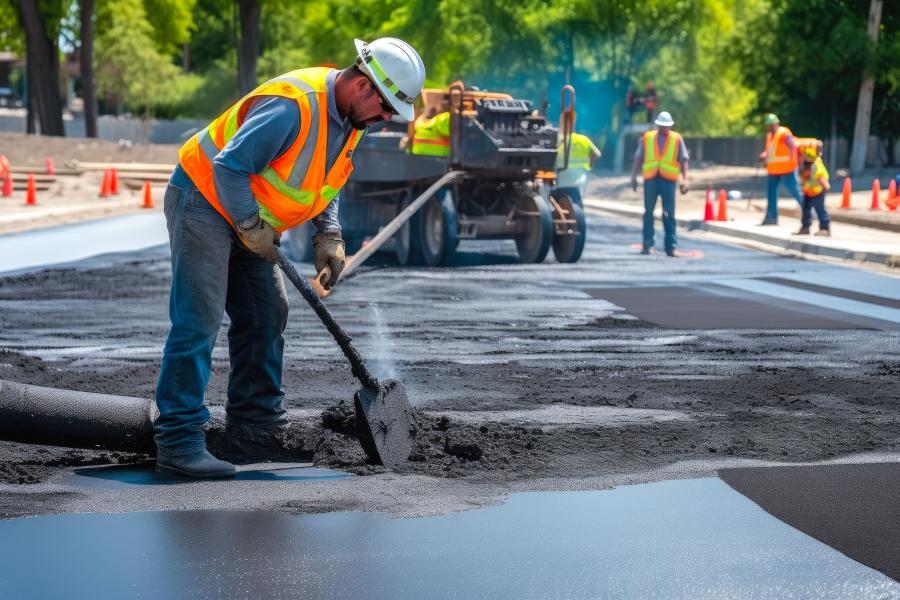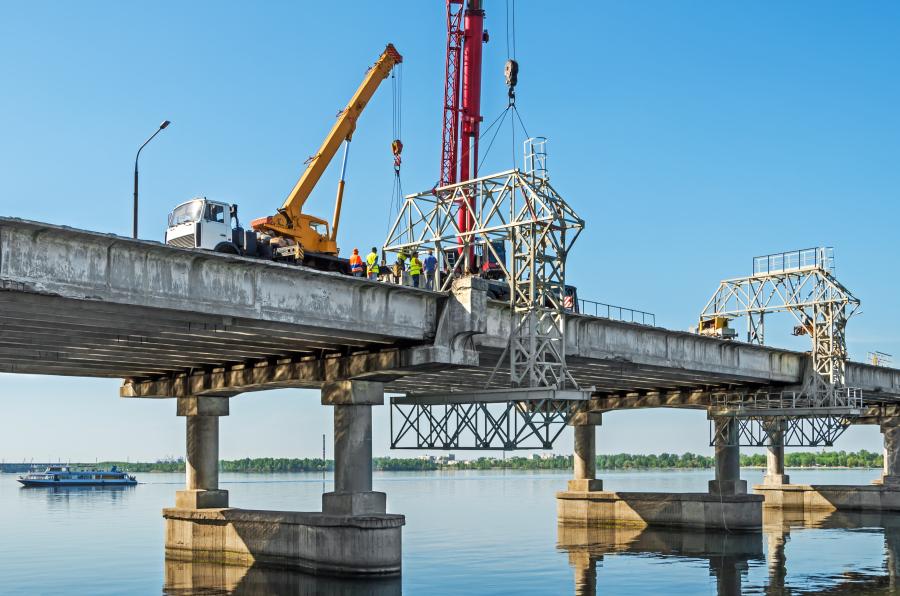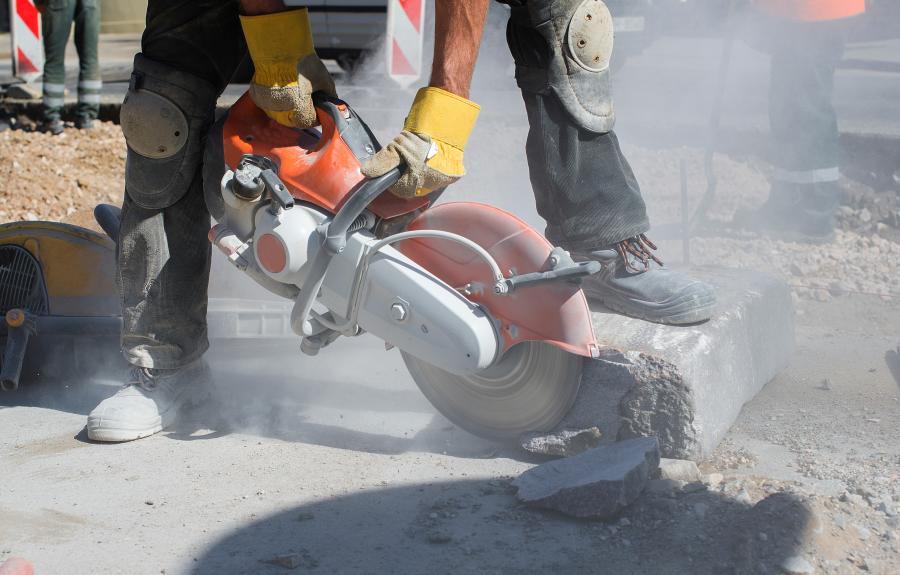DOT wants states to lean toward repairing and rehabilitating existing transportation facilities. Many states are choosing to earmark IIJA funds for new construction.
In committing to a major, long-term investment in infrastructure, the federal government has left much of the decision about where to channel funding largely to states.
The DOT said states can choose, with the hope that repairs would win out over expansions. The debate over building new infrastructure vs. rehabilitating existing roads and bridges has only intensified since President Joe Biden signed IIJA into law.
The IIJA has set in motion highway, airport, bridge and water projects that were shelved over the decades as U.S. infrastructure sat neglected.
Its long-term goal is to release the backlog, build out broadband Internet nationally and prevent damage from climate change.
The amount most states will see as their transportation funding allotments equates to a nearly 30 percent increase over the next five years.
But while DOT wants to see existing transportation facilities repaired, many states are choosing to earmark funds for new construction.
What John Q. Public Thinks
Many Americans want officials to stop spending money on projects that affect their daily lives, StreetBlog reported. A poll by nonprofit Smart Growth America found that more than two-thirds believe highway expansions won't fix congestion.
In fact, 67 percent of respondents either "strongly" or "somewhat" agreed that expanding highways takes years, causes delays and costs billions of dollars. The same number agreed that "widening highways attracts more people to drive, which creates more traffic in the long run."
The average U.S. voter "understands the long-proven principle of ‘induced demand' better than many U.S. transportation officials," noted StreetBlog.
Induced demand "is real and people understand it," said Steve Davis, associate vice president of Smart Growth, which co-commissioned the study.
"Only a small percentage believes the promise that new lanes and new roads magically make congestion and delay go away."
Survey respondents also weighed in on what they believe does work to keep traffic moving — starting with repairing existing roads.
More public transportation options and building communities so people do not have to drive as much also were chosen as the most-effective solutions.
"Adding lanes to highways and freeways' tied for second-to-last with "making streets more bike-friendly."
More than 82 percent preferred congestion mitigation strategies other than building bigger and bigger roads. And they were about twice as likely to pick basic road repair and public transportation over building new lane miles, noted StreetBlog.
"There's a political perception that [induced demand] is not understood," said Beth Osborne, executive director of Transportation for America (TA).
That perception, as a result, is used as an excuse for not talking about the concept of induced demand, she said.
"We also have to ask how long people will accept this [kind of decision-making] before they'll cut off their money."
Meantime, there is very little new funding in the infrastructure bill specifically dedicated to repair, said Steve Davis, assistant vice president of Transportation for America.
"And [there is] no new requirements on highway monies for prioritizing repair on roads and bridges," said Davis.
He said the law "doubled down" on giving states flexibility with the bulk of their money and then hoping they would prioritize repair.
FHWA reported to the Associated Press that 12 capacity-expansion projects have received funding through competitive grants. In fact, AP reports that states have used their formula funding toward 763 such projects. The dollars directed to these projects come to more than $7 billion.
"Repair was one of our biggest disappointments in the infrastructure law," wrote advocacy organization TA.
"The last decade has shown us repeatedly that too often states use their flexibility to build new things they can't afford to maintain while neglecting to properly address their repair needs."
This practice is one of the most fiscally irresponsible things our nation does with transportation policy, the organization believes.
"Every dollar spent on a roadway expansion project is both a dollar that was not spent on repair, and a dollar that created decades of future repair costs."
Instead, the administration should work to ensure that the funds they control prioritize repair, while nudging states and metros toward the same goal.
"With a massive increase in guaranteed federal funding coming their way, they have no excuses left."
Breaking Down the Bill
The advocacy organization detailed the two major funding programs typically drawn from for repair needs at the state level.
The National Highway Performance Program (NHPP) is tapped for approximately 53 percent of all states' base highway formula appointment.
The Surface Transportation Block Grant Program is the most flexible source for infrastructure repairs at the state level.
NHPP funds are intended to be spent on the National Highway System's roads and bridges, said TA.
It also is earmarked for transit or bicycle and pedestrian infrastructure in a national highway system corridor.
"Funding for the NHPP went up by 26 percent over the FAST Act," noted the organization. That means more money is "theoretically" available for repair projects if states choose to spend it that way.
Surface transportation block grants can be used on repair projects as well as transit, biking, walking and nearly all other possible mode of surface travel.
TA also noted that many states don't take advantage of that flexibility.
"There is also a separate new program for repairing bridges that's already been in the news after FHWA released the first batch of funding to states."
At $43 billion, the bridge formula program is meant to repair either NHS bridges or those owned by counties, cities or other localities.
States have to come up with 20 percent of the cost for bigger projects. The program can cover 100 percent of the repair of locally owned off-system bridges. This component of the program is meant to incentivize more funding toward vital smaller bridges, which many states tend to ignore.
However, funds under this repair program can be utilized for expansion and building new bridges, according to FHWA.
States are encouraged to improve highway bridges in poor condition and preserve or improve in-service highway bridges classified in fair condition.
The agency considers construction of a new highway bridge to replace one in poor condition, to be improving the condition of an in-service highway bridge.
"While states are free to neglect repair needs, the new law does uphold state of good repair programs for public transit," said TA.
Walking Back the Rules
After much flack, in February FHWA changed position, saying it recognized the need for states to determine their own infrastructure priorities.
Critics in Congress claimed it was "another effort to exert its preferences to deprioritize projects that increased road capacity."
Rick Crawford, House highways subcommittee chair, said, the policy "represented a complete departure from the federal-state partnership."
He believed it was inconsistent with the law and was met with confusion from the states and concerns from industry stakeholders.
But industry "is already fixing it first," maintained AGC. And while the guidance sounded practical, it actually limited the ability to add highway capacity.
Some 80 percent of the state funding already goes toward maintaining and reconstructing existing infrastructure, according to the association.
"Our interstates were built over 50 years ago, so it makes sense that states are now largely focused on maintaining and modernizing them," said the group. "But it is also critical that states have the flexibility to add new capacity to meet the needs of a growing population."
After a congressional review act was filed, the agency memo effectively rescinded the guidance encouraging emphasis on fix-it-first programs.
"I was glad FHWA recently issued an updated memorandum superseding and effectively reversing the Dec. 16, 2021, memorandum," said Crawford.
In announcing the rescission, Shailen Bhatt, FHWA administrator, said different states have different needs in regard to transportation assets. These respective transportation needs "must be reconfigured and modernized, expanded and added, or retired and replaced," she wrote. "FHWA recognizes and values the authority of states in deciding how to prioritize the use of their federal aid highway dollars."
She added that the agency will continue to "administer funds and programs consistent with all requisite statutory requirements and considerations."
The memo insisted, though, that maintenance "is an important tool to ensure the effective use of federal funding."
Infrastructure Law Status Report
In March, the House highways and transit subcommittee heard from states and industry about how IIJA's implementation has rolled out since late 2021.
Paula Hammond, ARTBA senior vice president, reported on progress already charted on the books.
"Nearly half of the IIJA's investment — $450 billion — will be spent improving highways, bridges and public transportation systems," Hammond wrote.
"The IIJA represents the largest nominal increase in highway funding in 65 years," she said. "In the first 16 months of the IIJA, states committed funds to nearly 34,700 new projects, totaling $61.3 billion in formula and discretionary funds."
The new construction is happening across the country, she said, adding at least one new project is under way in every congressional district.
Despite the notable progress in IIJA implementation, inflation has reared its ugly head, critically impacting construction.
"Inflation's impact cannot be understated," wrote Aric Dreher of ABC. "Input prices for construction projects have increased on average by 11.1 percent."
Construction materials prices are up more than 39 percent since February 2020, he noted.
Add labor shortages and supply-chain issues and it is becoming increasingly difficult for construction projects to continue as originally planned, said Dreher. CEG
Today's top stories























